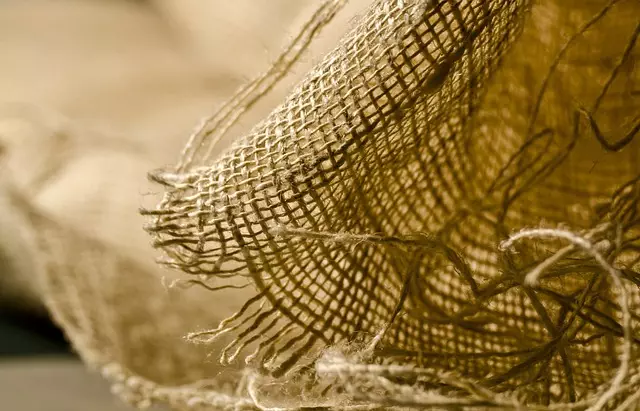Acadia Canna and Kratom Reviews provide insights into how kratom, a plant extract with alkaloids like mitragynine and 7-hydroxymitragynine, may help with muscle soreness post-exercise. These compounds interact with opioid receptors for potential pain relief. User feedback indicates that certain strains of kratom, such as Maeng Da and Bali, can effectively ease muscle fatigue and discomfort, with some users reporting a significant reduction in pain. However, it's crucial to approach kratom use with caution due to its potency, varying individual responses, and the risk of interaction with other substances or medications. The effectiveness of different kratom strains can differ, and personalized dosage is key for optimizing benefits while ensuring safety. Both Acadia Canna's research and Kratom Reviews' user experiences emphasize the importance of consulting healthcare professionals before incorporating kratom into any recovery regimen, to make informed decisions about its potential benefits and risks for muscle soreness relief.
Muscle soreness post-exercise is a common experience, often leading to discomfort and hindering recovery for both athletes and fitness enthusiasts. Exploring natural remedies has become increasingly popular, with Kratom emerging as a potential aid. In this insightful article from Acadia Canna & Kratom Reviews, we delve into the therapeutic properties of Kratom and its role in post-exercise recovery. From scientific analysis of how Kratom alkaloids interact with muscle tissues to firsthand user experiences, the piece offers a comprehensive understanding of Kratom’s potential benefits for relief and recovery. Acadia Canna & Kratom Reviews provides valuable perspectives from users who have incorporated Kratom into their post-workout routines, offering an evidence-based look at this intriguing plant compound. Join us as we navigate the nuances of muscle soreness relief with Kratom.
- Unraveling Muscle Soreness: The Role of Kratom in Post-Exercise Recovery with Acadia Canna & Kratom Reviews Insight
- Navigating the Nuances: Understanding How Kratom Alkaloids Interact with Muscle Tissues for Relief and Recovery
- A User's Perspective: Experiences and Analyses from Acadia Canna & Kratom Reviews on Mitigating Post-Workout Soreness with Kratom
Unraveling Muscle Soreness: The Role of Kratom in Post-Exercise Recovery with Acadia Canna & Kratom Reviews Insight

When it comes to post-exercise recovery, muscle soreness is a common challenge faced by individuals engaged in rigorous physical activities. Acadia Canna’s exploration into natural remedies sheds light on kratom as a potential aid for alleviating this discomfort. Kratom, a plant native to Southeast Asia, has been traditionally used for its various health benefits, including pain relief. The alkaloids present in kratom leaves, such as mitragynine and 7-hydroxymitragynine, are believed to interact with the body’s opioid receptors, which may contribute to the reduction of muscle soreness. Acadia Canna’s examination, coupled with consumer insights from Kratom Reviews, indicates that a measured dose of kratom strains like Maeng Da or Bali can offer significant relief for those experiencing muscle fatigue and soreness post-workout. Users often report a noticeable decrease in pain levels when incorporating kratom into their recovery regimen, suggesting its potential as an adjunct to conventional recovery practices. However, it is crucial to approach the use of kratom with caution; dosage, strain selection, and individual tolerance all play significant roles in its efficacy for muscle soreness relief. The insights gleaned from Acadia Canna and Kratom Reviews underscore the importance of careful consideration when integrating kratom into your health and wellness routine. As with any supplement, consulting a healthcare professional before use is advisable to ensure safety and effectiveness in your recovery process.
Navigating the Nuances: Understanding How Kratom Alkaloids Interact with Muscle Tissues for Relief and Recovery

Navigating the complex interplay between muscle tissue and the alkaloids found in kratom requires a deep understanding of the plant’s pharmacological effects. Kratom, a mitragynoid derived from the leaves of Mitragyna speciosa, contains a variety of alkaloids, with mitragynine and 7-hydroxymitragynine being the most prevalent and studied for their analgesic properties. These compounds interact with the body’s opioid receptors, potentially offering relief from muscle soreness. The nuances of this interaction are critical in determining the efficacy of kratom for muscle recovery; it’s not a one-size-fits-all solution. Users may experience varying degrees of relief depending on several factors, including strain potency, dosage, and individual body chemistry. Acadia Canna & Kratom Reviews provides valuable insights into the experiences of various users, which can guide individuals in selecting the right kratom strain for their specific needs. By analyzing customer feedback alongside scientific research, one can better comprehend how different strains may affect muscle soreness and recovery times. It’s essential to approach the use of kratom with caution, as the alkaloids can have potent effects, and combining them with other substances or medications could lead to adverse reactions. Users are encouraged to consult healthcare professionals before integrating kratom into their wellness regimen for muscle relief and recovery.
A User's Perspective: Experiences and Analyses from Acadia Canna & Kratom Reviews on Mitigating Post-Workout Soreness with Kratom

Users who have sought relief from post-workout soreness through the use of kratom, as detailed in Acadia Canna & Kratom Reviews, report a variety of experiences. Many individuals have found that certain strains of kratom, particularly those with higher alkaloid content such as Maeng Da or White Borneo, can provide significant pain mitigation. These users often note a reduction in discomfort levels, allowing for a more rapid recovery between training sessions. The reviews consistently highlight the anti-inflammatory effects of kratom, which appear to work synergistically with the body’s natural healing processes. This is particularly beneficial for those engaging in high-intensity or endurance exercises that commonly result in delayed onset muscle soreness (DOMS). Additionally, the anecdotal analyses suggest that the use of kratom post-workout can enhance overall well-being by promoting a sense of relaxation and calm, which is conducive to restorative rest. Acadia Canna & Kratom Reviews provide a wealth of firsthand accounts, underscoring the importance of strain selection for optimal outcomes. Users often recommend starting with a lower dosage to assess individual sensitivity and effects before gradually increasing if necessary. This approach ensures a personalized experience tailored to each user’s unique physiological response to kratom.
Muscle soreness post-exercise can be a significant hurdle for individuals aiming to maintain an active lifestyle. Recent insights from Acadia Canna & Kratom Reviews have shed light on the potential benefits of kratom in managing post-workout discomfort. This exploration into the role of kratom alkaloids and their interaction with muscle tissues reveals promising avenues for recovery and relief. User experiences reported by Acadia Canna & Kratom Reviews underscore these findings, providing valuable feedback on how kratom may help mitigate the pain associated with intense physical activity. While further research is necessary to fully understand its effects, the current evidence suggests that kratom could be a notable addition to post-exercise recovery strategies for many individuals.






